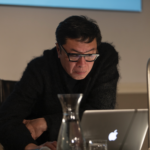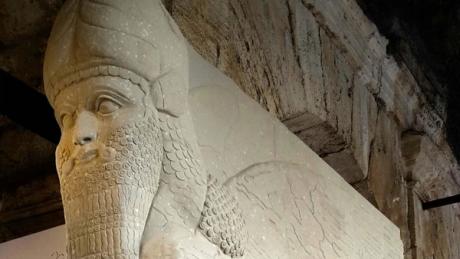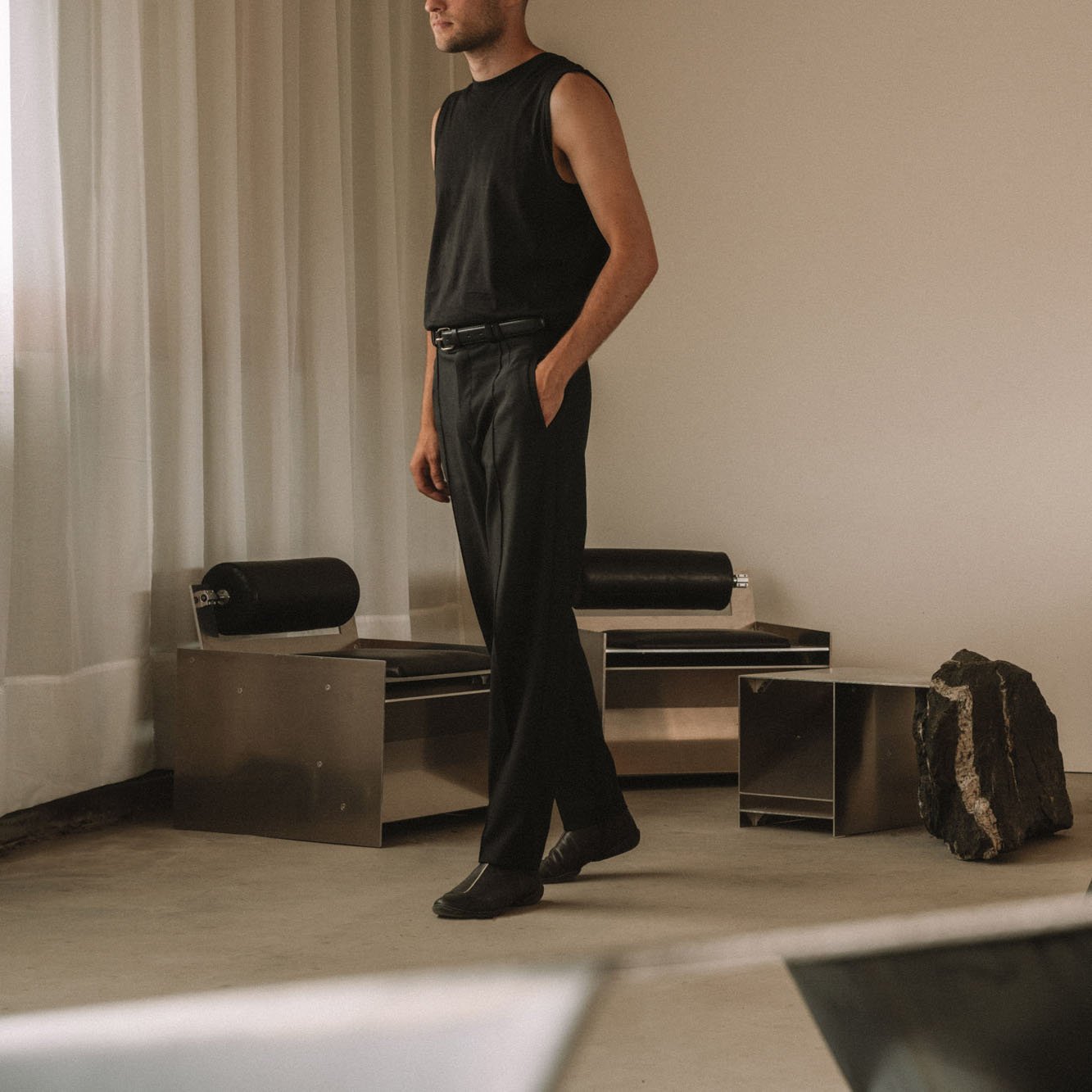Pay and Display
2011 - Film & Video (Film & Video)
Oliver Beer
Pay and Display is a film of a performance, for which there was no audience, staged in the multistory Pershore Street car park in Birmingham, a brutalist building, arguably one of the most inhospitable environments for a musical performance. Dilapidated and empty, the ghostly presence of the car park comes to life. Beer composed the piece to resonate with this architecture, finding the frequencies that would bring the building to life, acting as a sound box and in effect another voice. Thus the inherent harmonies of the architecture are revealed. The building becomes almost a mythical figure constantly harrying the public working itself into a frenzy of demands for money. The quasi-religious nature of the music suggests the primacy of mammon in our society, climaxing on the word Sunday, which is the day of worship in the Christian week. The text of the piece is based on the signs that are scattered insistently around the car park: ‘Have you paid and displayed except on Sunday’. There is thus a consonance between the vocal score, written in six parts, and the environment. His choice of building was in line with the project as a whole, which seeks to animate spaces that are generally forgotten, hidden or unremarked but which play an essential social role. The film is played on two large-scale screens with high quality sound, creating an intense immersive experience. The work of Oliver Beer explores the resonances in buildings and objects, exploiting the occurrence of natural frequencies that turn buildings and objects not only into amplifiers but musical instruments. Having studied musical composition at the Guildhall School of Music, he then trained as a fine artist at Ruskin School of Art. The artist combines expert musical knowledge with fine art practice to create performances, objects and films. Most recently, his piece for four voices was performed at Thaddaeus Ropac Gallery in London. Four singers, each in a different corner of the room, sang a score he composed specifically for the room, having established on what notes the room would resonate. In Beer’s practice, the room becomes a massive sound box, a wind instrument that is an extension of the singers’ own wind instrument, and the voice that resonates in the mind. The building, in effect, sings back to the singers. While there something quite Orphic about this process, the resonance equally has a strong relationship to the Platonic belief in the harmonics of the universe. The resonance project pitches sublime sound with the most banal, or democratic of architecture. Car parks, sewers, concert halls, corridors, vestibules and staircases have been the venues for his work, all of which is site specific.
The work of Oliver Beer explores the resonances in buildings and objects, exploiting the occurrence of natural frequencies that turn buildings and objects not only into amplifiers but musical instruments. Having studied musical composition at the Guildhall School of Music, he then trained as a fine artist at Ruskin School of Art. The artist combines expert musical knowledge with fine art practice to create performances, objects and films. Most recently, his piece for four voices was performed at Thaddaeus Ropac Gallery in London. Four singers, each in a different corner of the room, sang a score he composed specifically for the room, having established on what notes the room would resonate. In Beer’s practice, the room becomes a massive sound box, a wind instrument that is an extension of the singers’ own wind instrument, and the voice that resonates in the mind. The building, in effect, sings back to the singers. While there something quite Orphic about this process, the resonance equally has a strong relationship to the Platonic belief in the harmonics of the universe. The resonance project pitches sublime sound with the most banal, or democratic of architecture. Car parks, sewers, concert halls, corridors, vestibules and staircases have been the venues for his work, all of which is site specific .
Colors:
Related works sharing similar palette

© » KADIST
Lenka Clayton and Phillip Andrew Lewis
2022Five Hundred Twenty-Four, a single-channel video installation by Lenka Clayton and Phillip Andrew Lewis, features singers from over twenty Cleveland-area choirs counting numbers in an iterative process: one person sings “one”, then two people sing “two”, and so forth, to 524...

© » ARTS EQUATOR
Ong Keng Sen: Pushing the conversation | ArtsEquator Thinking and Talking about Arts and Culture in Southeast Asia Articles Patricia Bateira May 6, 2020 Theatre stalwart Ong Keng Sen returns to helm Singapore theatre company TheatreWorks, after being away for a decade to complete his PhD in Performance Studies at Tisch School of the Arts in New York...
:quality(70)/cloudfront-us-east-1.images.arcpublishing.com/uscannenberg/M45ZZ5XUD5ELFM2NFVJ4VVASYU.jpg)
© » ARTSJOURNAL
Stolen Syrian art funds international terrorism – Why aren’t we talking about it? – Annenberg Media Skip to main content Arts, Culture & Entertainment Stolen Syrian art funds international terrorism – Why aren’t we talking about it? Stories about the trafficking of blood antiquities across an international black market don’t often appear in the average person’s news diet; Stories about the terrorist organizations that these antiquity sales fund do, though...

© » GALERIE MAGAZINE
See Highlights from Design Miami/ 2023 - Galerie Subscribe Art + Culture Interiors Style + Design Emerging Artists Discoveries Artist Guide More Creative Minds Life Imitates Art Real estate Events Video Galerie House of Art and Design Subscribe About Press Advertising Contact Us Follow Galerie Sign up to receive our newsletter Subscribe Maison Gerard booth at Design Miami/...

© » KADIST
Mahmoud Khaled
2009CAMARADERIE is a precursor to and a blueprint for Mahmoud Khaled’s later forays into queer aesthetics and modes of visual representation...

© » THEARTNEWSPER
Italy donates replica of Bull of Nimrud destroyed by Isis to Iraq Art market Museums & heritage Exhibitions Books Podcasts Columns Technology Adventures with Van Gogh Search Search Heritage news Italy donates replica of Bull of Nimrud destroyed by Isis to Iraq The 3D-printed reproduction of the Assyrian statue was previously displayed at the Colosseum in Rome and the Unesco headquarters in Paris James Imam 9 February 2024 Share The replica of the Bull of Nimrud at the Colosseum © Museo Archaeologico del Colosseo Italy has donated a reconstructed Assyrian statue to Iraq in what has been described as a “miracle of Italian cultural diplomacy”...

© » KADIST
Charwei Tsai
2008Charwai Tsai’s photograph documents her Hermit Crab Project installation upon the construction site of gallery Sora in Tokyo...

© » KADIST
Edgar Arceneaux
2006Untitled (Wheelchair Drawing) is a ten-foot photo transfer of the image of a wheelchair with burning embers in its seat...

© » IGNANT
In The Studio With Jakub Kubica: Between Minimalist Design And Sci-Fi Archeology - IGNANT Name Jakub Kubica Images Clemens Poloczek Words Marie-Louise Schmidlin With a portfolio that spans minimalist furniture, functional design objects, and futuristic artworks, the practice of Jakub Kubica meets at the intersection of various disciplines...

© » ARTS EQUATOR
Podcast 65: M1 CONTACT Contemporary Dance Festival (Part 1) | ArtsEquator Thinking and Talking about Arts and Culture in Southeast Asia Articles Photo: Crispian Chan September 12, 2019 Duration: 20 min Podcast host Chan Sze-Wei and guest Melissa Quek discuss works they saw at the recent M1 CONTACT Contemporary Dance Festival, specifically at the platforms DiverCity, Off Stage and M1 Open Stage...










